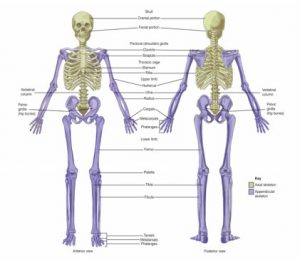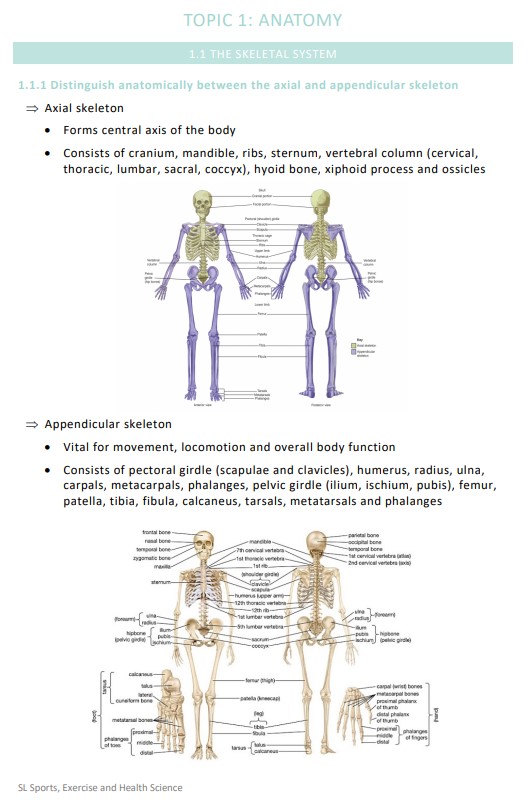IB SEHS Standard Level Study Notes
Summary:
These notes provide a comprehensive and detailed study resource for the IB Standard Level Sports, Exercise, and Health Science (SEHS) course. Designed in accordance with the latest syllabus, the notes cover all core content from Topics 1 to 6, including Anatomy, Exercise Physiology, Energy Systems, Movement Analysis, Skill in Sport, and Measurement and Evaluation of Human Performance.
With 106 pages, these notes offer a thorough understanding of the subject matter. Topic 1 delves into the study of anatomy, exploring the structure and function of the human body in relation to sports and exercise. Topic 2 focuses on exercise physiology, examining the physiological responses and adaptations during physical activity.
Energy Systems, covered in Topic 3, explores the different energy pathways utilized by the body during exercise and their contribution to performance. Topic 4, Movement Analysis, provides insights into the biomechanical principles underlying human movement and their application in sports and exercise contexts.
The notes also address the importance of skill development in Topic 5, exploring the acquisition, refinement, and application of motor skills in various sporting activities. Finally, Topic 6 focuses on the measurement and evaluation of human performance, providing tools and techniques to assess and monitor physical capabilities and performance outcomes.
These comprehensive notes serve as a valuable study aid for students undertaking the IB Standard Level SEHS course. They cover essential topics, ensuring a solid foundation of knowledge and understanding in sports, exercise, and health science.
Excerpt:
IB SEHS Standard Level Study Notes
-> Axial skeleton
• forms the central axis of the body
• consists of the cranium, mandible, ribs, sternum, vertebral column (cervical, thoracic, lumbar, sacral, coccyx), hyoid bone, xiphoid process and ossicles

IB SEHS Standard Level Study Notes
-> Appendicular skeleton
• Vital for movement, locomotion and overall body function
• Consists of pectoral girdle (scapulae and clavicles), humerus, radius, ulna, carpals, metacarpals, phalanges, pelvic girdle (ilium, ischium, pubis), femur, patella, tibia, fibula, calcaneus, tarsals, metatarsals and phalanges


Reviews